#ttte class 40
Text

I’m suck at managing my canvas space🤯
So uh… some humanized designs I’ve been cooking, In my Thomas era 3.0!!!🚂
#my art#artists on tumblr#digital art#ttte#ttte humanized#thomas and friends#thomas the tank engine#ttte rosie#ttte boco#diesel 10#ttte class 40#Ttte bowler#ttte millie#ttte luke#gjinka#humanization#Theres little to no content of my boy bowler so I gotta make one myself
214 notes
·
View notes
Text
Some warmup sketches of this idiot I guess
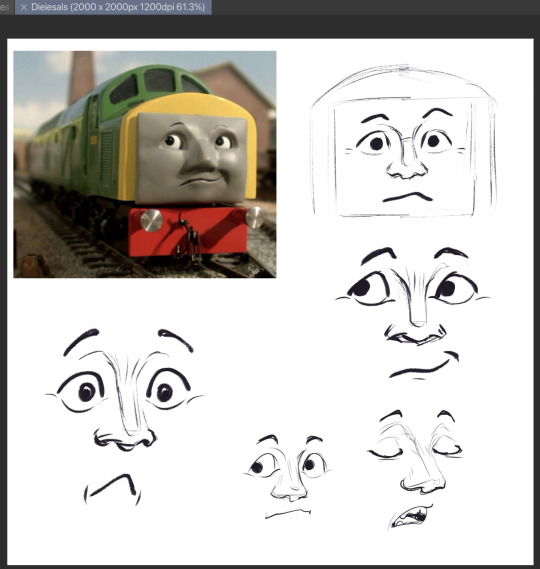
#ttte class 40#ttte bowler#ttte d4711#(idk what his main character tag is on tumblr#so I’ll just put em all)#my art#sketches#is this anything
151 notes
·
View notes
Text



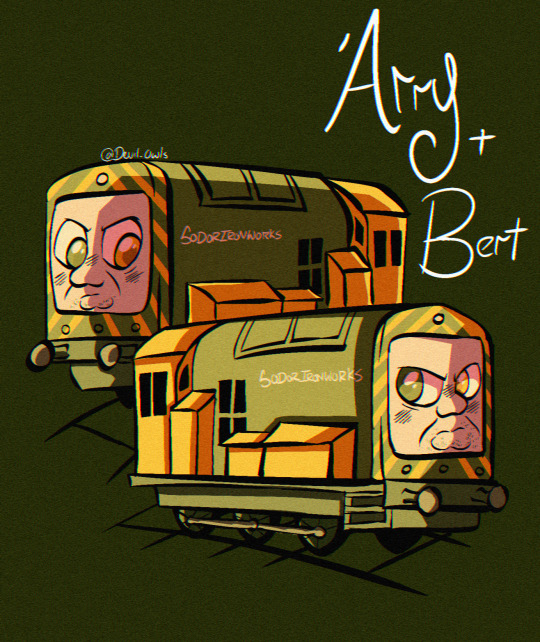
Some devious diesels
#ttte fandom#ttte fanart#ttte#ttte diesel#ttte diesel 10#ttte class 40#ttte arry#ttte bert#diesel#diesel 10#class 40#arry and bert#thomas and friends#thomas the tank engine#fanart
126 notes
·
View notes
Text
The Destruction of Engine Culture:
Ok, so this is going to be another long, and rambling post. So be warned. And as usual, this is a RWS theory post, so there will be talk of scrap.
That said, let's dive into the destruction of engine culture.
So, I think the first thing to ask is what would be 'engine culture' and how would it affect the railways of Britian (and globally) - and the answer is quite simple: it's the same as human culture. Humans have developed cultures for millennia, and they are often quite similar, and this is hypothesized to be because these cultures had similar things to warn about. Warning about the dangers of flooding, of wild animals, of droughts and fires. Many of the oldest stories are tales told to teach practical lessons. Little Red Riding Hood is as much about stranger danger and the threat wild animals pose as it is a story about a crossdressing wolf. Some scientists believe games like tag and catch were developed by our hunter-gatherer ancestors to teach hand-eye coordination and improve stamina. This is of course very early culture: stories, games and songs passed down from one generation to the next - but that's what we're talking about here. Railways are 220 years old at the oldest possible (and there are surviving engines from this era), so it's an early era of culture for them.
Furthermore, engines would inherit much of their railways' culture, depending on where they are. An engine working in Tsarist Russia would grow up with that culture, whereas an engine in Argentina, or France, or Kenya would grow up with the local cultures. This includes language, music, belief systems and otherwise. So that's the basis of engine culture itself: human culture. Engines learn human language, they sing human songs and they might even take on human beliefs.


They do, however, have their own beliefs. Lady, for one, with her gold dust and magic, has been used by fanfic authors as an 'engine deity', while Thomas and Friends alluded to Proteus being a deity of some sort, with a magic lamp. These engine 'deities' exist, it seems, as a focal point for engines. Proteus represents the ability to make wishes - something engines really don't have, while Lady represents freedom. She's able to travel great distances on her own, between continents, without needing to pull trains. Does that not sound like the railway version of attaining freedom?
So the engines have 'deities'. I won't call them gods, because that's very likely not what they are, but they are legends told by older engines to younger ones.
The other kind of legends that would really dominate engine culture would be practical moral tales - in the same vein as Little Red Riding Hood being about stranger danger and the threat of wild animals, stories told between engines would be warnings about the trucks, or bad stretches of line, or dangerous weather. But unlike fairy tales, these stories would come from experience. Engine culture is very new, and it's being developed continuously during the Victorian era. Incidents like the Tay Bridge Disaster, or William Huskisson's death, or the Abbots Ripton rail disaster all are quickly turned into stories told by the older engines to teach the new arrivals (of which there are hundreds by the year) about how to run the railway as safely as possible.


The engines also develop games which help them to watch signals, or counter miles, or figure out their location in adverse conditions. These games started as training exercises, but became more fun as young engines made them competitions. They also develop songs of their own, which can tell messages:
"Once an engine when fixed to a train
Was alarmed at a few drops of rain,
So went "puff" from its funnel
Then fled to a tunnel,
And would not come out again."
The message: don't stop in a tunnel.
But the thing is, this post is about the destruction of engine culture, and now that I've explained it, I'm going to explore how it was decimated.
And for that, we start with the Second World War, which saw a complete upheaval of the railways of Britain. The war was especially hard on the railways, and engines were often used around the clock with no rest. This meant that a lot of the newer engines never got to hear these stories before being sent out for weeks at a time, as they never spent any time at a single shed. And even if they were parked up at a shed, everyone was so exhausted they didn't have time to tell tales. And at the end of the war, a lot of the oldest engines were withdrawn, completely worn out. The oldest engines were the ones who told many of the tales, and their loss was the start of a decline.
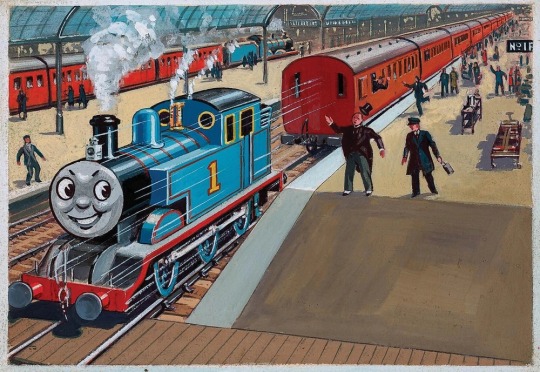

The Railway Series, however, would pick up a lot of the slack from this loss, as many of its earliest stories were in that same moral vein as traditional 'engine culture' stories, focusing on listening to elders, not stopping in tunnels, being patient, gentle with coaches, careful with trucks - it's all there. And I can see that being due to Edward teaching the Reverend many of these stories, in a bid to keep them from vanishing. And he would continue on, joined by other older engines like Skarloey, Rheneas and Toby, as the book series went on. Things like listening to advice and not acting recklessly pop up constantly - especially with Duncan, who Skarloey had to deal with.
It all gets worse when British Railways forms though. And this is where the 'railway rulebook', the attitudes of diesels and the doctrine of BR all come in to play. As the doctrine and official rulebook of British Railways portrays steam engines as inferior, weaker engines, the diesels are indoctrinated into believing it - and thus, they refuse to listen. Take Diesel for example, who believes that diesels can just arrive at a yard and 'improve it'. He is immediately foiled by some jammed breaks - something he may have learnt about from a story or a tale from a steam engine. But he never stopped to listen. And it's the same across the country, across the world in fact. As the successful diesel classes prove themselves to their managers, they are rolled out and steam engines are withdrawn - and with that, so is the culture they were the keepers of.

But this isn't quite the end of this 'engine culture' yet, because one group willing to listen to the steam engines are the 'failures'. Engines like BoCo and Derek would be very willing to listen to the engines that have tales that may just help them. Stories like how to best use sand in a storm, or how to conserve energy over the Settle-Carlisle route. And so even as steam dies, these 'failures' hold their culture, and try their best to preserve it, alongside the preserved engines. The Railway Series does too, such as in 'Stepney the Bluebell Engine', where sanding is explicitly mentioned. Another group that take in this engine culture is the GWR diesel-hydraulics, who grew up with GWR ideology, and thus would have been more willing to listen to their steam ancestors.

But these 'non-standard' engines were also quickly wiped out. And this leaves only a few pockets of engines who remember the old stories: the preserved engines, and the few Gen-1 diesels who did listen. By the end of the working lives of the Class 40s, the Deltics and the 'Peaks', they are the last engines who remember the old stories from the steam era working on British Railways, and when they are scrapped, the next generation grows up relearning everything.
Because the fact is that these stories held a major purpose, and the destruction of that culture means that every mistake every warned against is suddenly being made again, and again, and again. We notice this in the Railway Series, where Diesel, and Class 40, and D199 and even Bear all make very elementary mistakes that would have been warned against in these cultural stories - like taking care around trucks or looking out for the wind. And it only gets worse as this first generation are scrapped. Engines scramble to a standstill on leaves again, engines get trapped in floods, or lost in storms, or run through signals - and it's because the games, the songs, the stories, everything that would have prevented these accidents is lost.
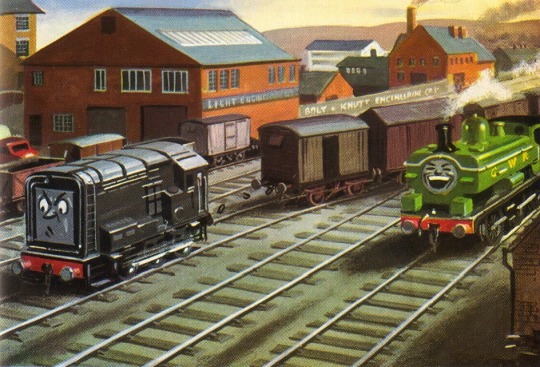
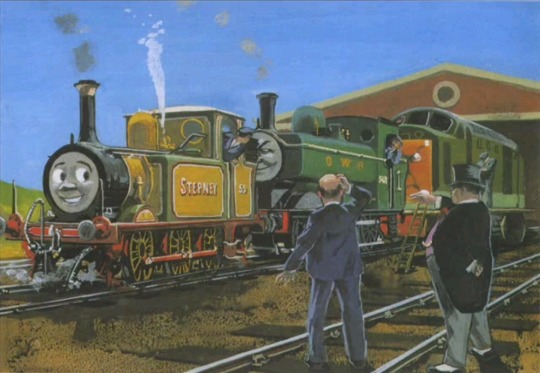
It's not until these diesels reach preservation that they hear the stories remembered by the steam engines, and that's when they realise that... hey, maybe the ancestors were right after all.
The saddest part is that it's not only a global thing, but that it's still very much a problem on modern railways. The loss of 'engine culture' between the 1950s and the 1980s would have a domino effect that would still impact modern railways, as the even newer electric engines and multiple units face the same issues but with no prior knowledge.
The pictures in this post are not mine.
#fanfiction writer#thomas the tank engine#weirdowithaquill#railways#railway series#the railway series#ao3 stuff#very long post#long reads#british rail#british railways#engine culture#ttte lady#ttte proteus#ttte diesel#ttte class 40#ttte stepney#ttte analysis
109 notes
·
View notes
Text


Class 40 and his real life basis; the English Electric class 40 1-Co-Co-1. A beautifully detailed and accurate model, and they only used it in one episode!
9 notes
·
View notes
Text
Okay here's the engine(s) of the day selection if someone spots something wrong please feel free to comment
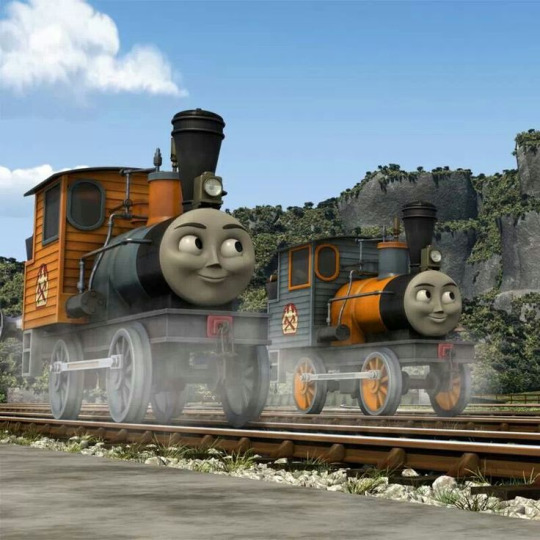
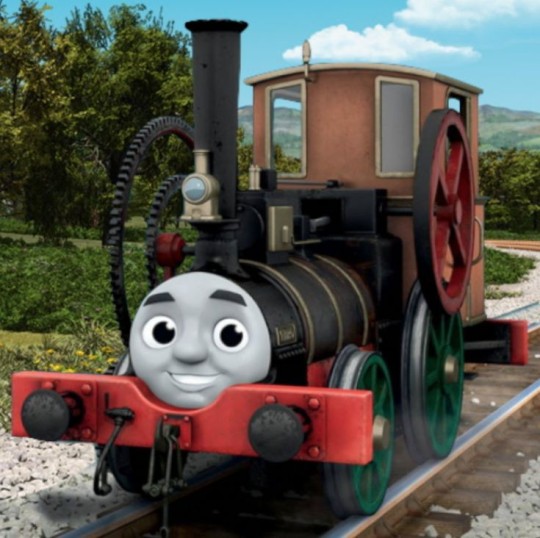



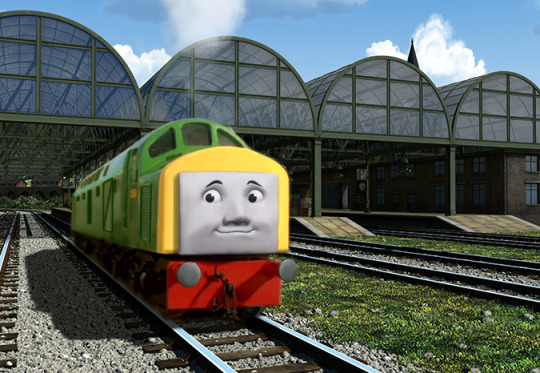
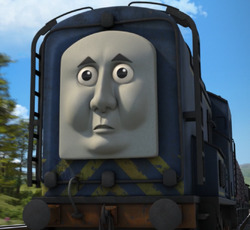
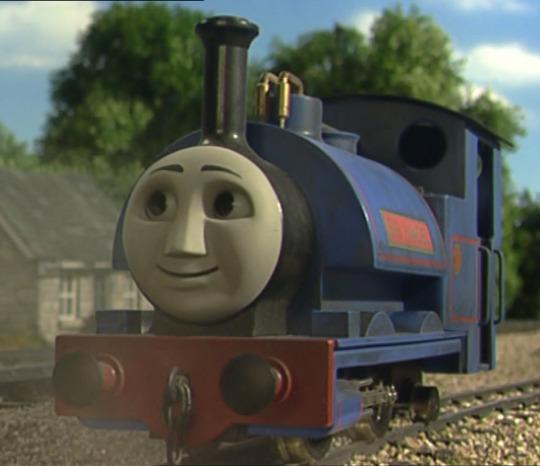


#ttte#thomas and friends#ttte bash#ttte dash#ttte theo#ttte hiro#ttte percy#ttte paxton#ttte sidney#ttte sir handel#ttte philip#ttte class 40#ttteaxel#tttefernando#engine of the day
6 notes
·
View notes
Note
What do you headcanon as happening to Bowler?
I'm assuming Bowler would be Class 40? I had to read up a bit on his class, but from what I gather, there were 200 made over a period of four years, 1958 - 1962, and 130 made it at least to 1981. Over the next three years, all but sixteen were withdrawn and scrapped. The odds are good that our Class 40, Bowler, was one of these. There's a possibility he could have been one of the few Class 40's to get a late game overhaul or even that he might be one of the seven preserved to this day.
If I were to do anything with him, any and all of those would be options, but just having to pick one right here right now? Gonna go with full life of service on the mainland until he was scrapped sometime between '81 and '84. Although, I can't deny that having him end up being one of the ones that makes it has its appeals, if only because part of the point of Engines in Sidings is the idea of telling a children's story with more nuanced, adult lessons. Like that sometimes dickheads go on to live full and satisfying lives despite clearly not deserving it and you have to make your peace with that. But I wouldn't do that to you without a good plot to support it.
4 notes
·
View notes
Text
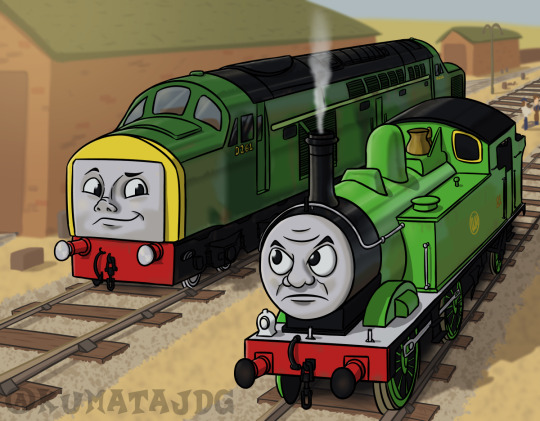
Commission of Oliver and Class 40!
#Oliver#Class 40#Diesel#Thomas The Tank Engine#Thomas And Friends#TTTE#oliver the western engine#Steam locomotive#Steam engine#Diesel locomotive#Train#Fanart#Illustration#Children's TV#90s#Nostalgia#Commission
57 notes
·
View notes
Text
RUDE AF


INSPO:

Me ; *Getting to hear one of Salty's adventures : "What did you say to them, Salty???"
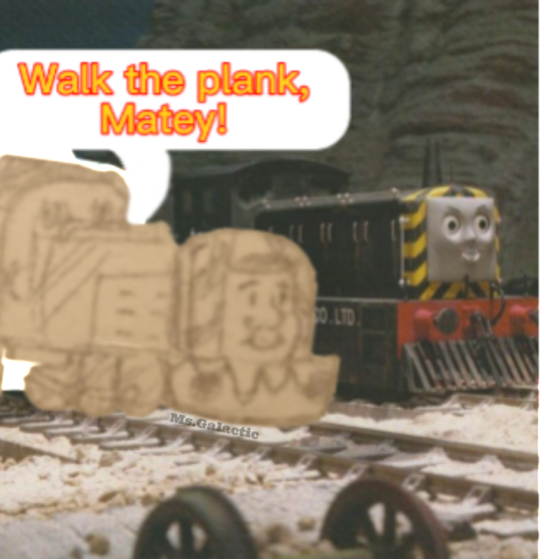
I KNOW HE'S SMOL WHAHHHHHHHHHHHHHHHH
SeeI couldn't make him the right size or find the perspective option 😭😭😭
#ttte fanart#ttte#ttte sir topham hatt#sir topham hatt#like bruh#ttte george#i think that's a tag....#anyone else thinks he & Class 40 were asses bc like wow#george was really disrespectful#ttte salty#ttte emily#my edit#my post#random post#traditional art#my art#sketch book#sketchbook#art dump#characters#cartoons#ttte mavis#thomas and friends#oh hold on#sir topham hatt was mean too :#crumbly#art
17 notes
·
View notes
Text
The way I see a lot of the Class 40s is that at first they were proud and boastful, not dissimilar to Gordon, but most of them quickly were very humbled when they could not match their steam counterparts.
After a while they mellowed out, grateful they were a large enough class they couldn't be withdrawn as early as some others.
D4711 and Old Stuck Up are some of the few that were just absolute assholes, through to the end
Why was D782 giving Stepney such a shitty look in that one illustration? Jealousy. Stepney looks all nice and preserved, and that same year English Electric built a prototype engine to replace them, called DP2. It was a rough year, for all of them.
2 notes
·
View notes
Photo

“Not bad...at least you’re all CLEAN.”.
Class 40 (Bowler/D261), my beloved. He’s my favorite obscure character. I love him, he deserved more screentime than what he was given. I decided to fo this quick thing of him. Just a simply shaded bust shot, nothing more.
(Also, sorry for the Watermark. Gonna be adding that from now on, better to be safe than sorry)
Reblogs are better than likes!!!
#thomas the tank engine and friends#thomas and friends#thomas the tank engine#ttte class 40#class 40#ttte#D261#ttte D261#thomas and friends humanizations#ttte humanizations#gijinkas#ttte gijinkas#nyancreeperdraws#my art#artists on tumblr
3 notes
·
View notes
Text

a lil sketch of d10 and bowler (and diesel in the very bottom)
Still struggling with taking pic🏃♂️
45 notes
·
View notes
Photo

#twf witch sheep#ena#ena shepherd#shepherd#shepherd ena#ttte#diesel 10#class 40#ena merci#breaking bad#walter white#danganronpa#monokuma#fnf#friday night funkin#eteled#helltaker#zdrada#gravity falls#bill cipher#biseuxal#bisexuell simp#gay simp#simp#the walten files
85 notes
·
View notes
Text
Sodor: 1965-2020
Back when I talked about how Sodor would fuel its railways in the 2010's (find that post here), I said I'd talk about how Sodor would remain profitable into the modern era.
Well, with Murdoch the Mighty Engine now completed (find that here) it's finally time to really dive into what kept Sodor moving throughout the latter half of the twentieth century and into the 21st.
I'm going to go in event order - and yes, this is all canon to my Extended Railway Series.
1965: Breaking Away From British Rail:
In 1965, British Railways was pretty desperate for money. And I mean it. The BTC was losing around £300,000 a day in 1961. The company was not able to pay its loans, and that led to desperation and the Beeching cuts.
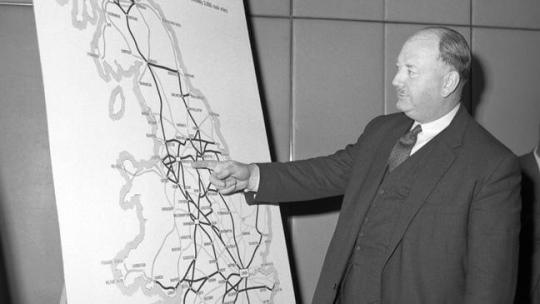
Sodor was at the time threatened with both the Peel Godred line and the Ffarquhar branch being drastically reduced in size or outright closed - and furthermore there was talk of Crovan's Gate Works being closed. The North Western Region was at the time chaired by Sir Charles Hatt, and he decided to take action.
This is where Sir Charles did perhaps the sneakiest piece of work in his entire career. For a man who was very above the board, this may come as a surprise.
Sir Charles was told by the BTC that if he could find 'the worth of the North-Western Region' - a number that they incorrectly overinflated to around £1,000,000. In comparison, 4472 Flying Scotsman cost £3,000 when bought by Alan Peglar.
Neither the NWR nor the Hatt family had that much money - and the railway, while profitable, did not make enough. So Sir Charles organised a secret backdoor deal with a different company to get the money.
Sir Charles went to the German Rail Company Deutsche Bundesbahn. He'd visited earlier that year and had witnessed the earliest development of the Linienzugbeeinflussung system (LZB) and had offered the Peel Godred branchline for further testing - only he needed the NWR to be independent before he could allow it, as BR didn't want anything to do with the tests.

The Deutsche Bundesbahn, ecstatic that someone wanted to basically hand over their railway to play guinea pig for a brand new untested system, forked over £1,000,000 in exchange for shares in the new NWR company and free access to the Peel Godred branch to test their LZB system.
Sir Charles Hatt gave British Railways the money, and on September 28th, the NWR was officially freed from BR, though the latter company got the rights to run trains to Tidmouth using their engines on 'trials'. The next day, Deutsche Bundesbahn was mysteriously given a massive share in the new company, and permission to test their new system.
1965-1979: Implementing LZB on Passenger Trains:
Siemens - the German company working with DB on their LZB system - opened a branch at Cronk to begin work on testing their LZB systems on the electric Peel Godred branch. Originally a hard-wired logic system only, testing on the Peel Godred and utilising the massive amount of energy harnessed at the hydroelectric dam, the system was quickly developed into a computer system.
While the Peel Godred electrics were able to handle the computers on board, the mainline proved to be a different challenge. Stephen Hatt, then working at Crovan's Gate to help him grow accustomed to the engines on the NWR, suggested renovating the old Mark I coaches BR was beginning to retire to have the LZB systems in them, connecting to the brake pipes. LZB coaches would have the letters 'LZB' printed on the front and sides of the coach to identify them.

On June 3rd, 1979, the last non-LZB passenger train left Tidmouth, a local train that ran as far as Cronk. From that point on, all passenger trains are meant to have an LZB coach at the front of the train, though there have been incidents were it was forgotten. When Pip and Emma were bought, LZB was placed straight in their cabs.
1966-1996: Modernising the Steam Fleet:
Edward went in for a heavy repair in 1965 after his 'exploit' and when he came out, he was a very different engine. The early stages of independence for the NWR were marked by very heavy tourist traffic. The Railway Series books were at the height of their popularity, and Sir Charles was finally free to advertise and profit from them. He organised a huge number of special trips throughout the latter half of 1965, culminating in Edward's infamous excursion. This raised enough money for the NWR to survive the winter season - and enough to begin modernising their steam fleet. Welding replaced riveting, and new superheaters and blastpipes were added. Edward was also the first NWR engine to gain roller bearings.
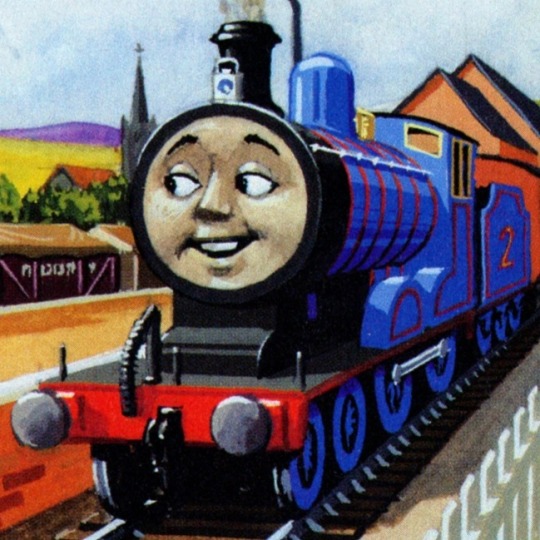
When Edward departed the Works in late 1966, he was much stronger than before, and certainly more capable! Oliver would gain the same upgrades upon arrival to the NWR, and over the next twelve years the entire rest of the fleet was rebuilt. New arrivals to the railway would undergo the same treatment, with Murdoch being gifted a kylchap blastpipe while being overhauled. Another factor of this period was extensive standardisation, which included funnel diameter, coupling rods, valve gear and cab window sizing.
Much of this ability to develop their steam engines came from the partnership with DB in Germany, which didn't withdraw its entire steam fleet until 1977.
1970-1996: Modernising the Diesel Fleet:
Starting in 1970, Sir Charles began to work on improving and standardising his fleet of diesel engines. BoCo, Bear and Daisy were all very different classes, and the cost of parts was beginning to mount, even after purchasing plenty of disposed parts from scrapyards across the country.
This was far more radical than what was done with the steam engines, and for good reason. While DB was the expert on Diesel-Hydraulic, it was also very expensive at a time when the NWR did not have all that much money to spare. The Little Western and Arlesdale Railway projects sucked up pretty much all the money the railway made at this time. So, they simply took the engines inside BoCo and Bear and replaced them. Entirely. Sir Charles bought excess Sulzer engines which were being fitted to the Class 47 and fitted them to his two big diesels. He did have to move... a lot of stuff internally - this was a rebuild unlike any other, and it kept them both out of service for a very long time. But by the end, he had forcibly standardised BoCo and Bear. Then Derek came along, and Sir Charles was forced to figure something else out for him. This was in the end achieved by taking the engines used by Daisy and jamming them into Derek. Except more of them, and turbocharged. Remarkably, this also worked (after a lot of screaming and huffing by the Crovan's Gate foreman!)
Bert, Diesel and Arry were far easier for Sir Charles and Sir Stephen, all being Class 08's and ubiquitous on BR. As they were retired, the NWR bought old engines and spare parts to repair their fleet.
Bowler and Spamcan would be given the same Sultzer engines as BoCo and Bear, as by this point the Class 47s were being retired on BR and there were plenty of spare parts available. Pip and Emma would retain their engines. Selector catalytic reduction (SCR) emissions reducers would be fitted to all diesel engines.
1975: NWR Holdings Inc:
In 1975, the NWR was incorporated alongside the Arlesdale and Skarloey Railways into NWR Holdings Inc, a new international stock company aimed at raising capital for the railways. First floated on Sodor, it attracted plenty of attention from locals, tourists and international companies alike. NWR Holdings would buy shares in various companies around the globe, including the American Railroad Union Pacific and in Danish shipping company Maersk. The Hatt family personally bought a massive number of shares in the company in what was potentially a highly-legally-questionable move. Still, NWR Holdings Inc would be chaired by Bridget Hatt from 1975 onwards and become a very profitable share-owning company.
1976: AWS and Air Brakes:
By 1976, all trains on the NWR were equipped with AWS and Air brakes, leading to a drastic reduction in accidents across the following years. While not a foolproof solution, when added to the new LZB system, it led to the NWR becoming one of the safest railways in all of England and Europe.
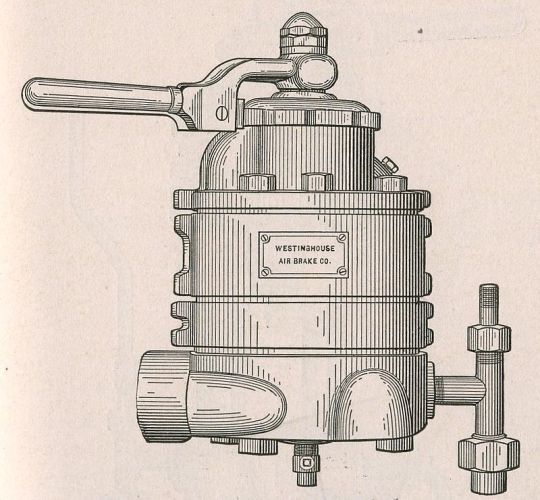
1985: Tourism Boom:
The NWR was inundated with traffic following the airing of the hit TV series 'Thomas & Friends' both in the UK and internationally, with the summer season of 1985 being perhaps the busiest in the island's history until that point, and a major victory for Sodor, which was now the most profitable railway region in Britain outside of London.
British Rail would attempt to force the NWR back into its company at this point, but the courts struck the case down due to the Tory Government disliking the idea of nationalising the network any further. This was the era when the Tory government began to privatise the various government agencies of the UK, and the NWR was upheld as a success of privatisation.
This tourism boom would have a major impact on the economy of Sodor too, with the service sector becoming central to the island's economy. The regional airport at Vicarstown was expanded to accept planes from as far away as Poland - something the NWR helped fund. This was incredibly well-timed, as the last of the mines on the island began to dry up around this time, and the new expanded service sector and transport sector used up much of these redundant miners.
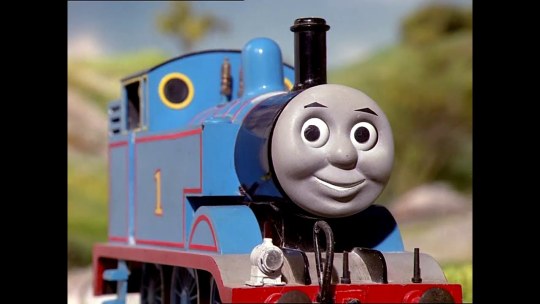
1993: Shares in Deutsche Bahn:
In 1992, Deutsche Bundesbahn began a merger with the Deutsche Reichsbahn to create the Deutsche Bahn in Germany. By this point, the NWR was an extremely profitable company and able to survive on its own, however it was also reliant on the DB for a reliable partner, especially as the UK was in the EU, and DB was able to offset much of the NWR's carbon emissions problems.
The NWR would put up a large sum of money - the modern equivalent of the £1,000,000 from 1965 - to prop up the company during the merger and managed to gain a healthy share out of the German rail company for its troubles. When the new Deutsche Bahn became public property all of five minutes later, the NWR kept its unique position, and the two became 'joint partners' - independent but aligned in much of their goals.
1994-1996: Expansion and the End of BR:
As explained in Modern Railway Engines, in 1994, the North Western Railway bought the Furness Line outright from British Rail. This included all stations, trackwork, and running rights. NWR trains now terminated at Lancaster on the West Coast Mainline, buying up platforms 5 and 6 at the station. the NWR now was directly connected to the WCML, and gained two mainline diesels, a HST and three shunting engines in the deal.

By 1996, these new engines had settled into their roles on the NWR, and the railway was well positioned for the turn of the century. The freight services along the NWR mainline would be fitted with LZB at this point, and further increase the safety of the entire network.
2007: Buyout of EWS:
In 2007, the British railfreight company EWS was bought out by Deutsche Bahn and NWR Holdings Inc as part of a joint-takeover of the freight sector of Britain's Railways after repeated issues with the company. The NWR and DB had very different designs on the company, however the NWR would triumph, and a period of drastic overhaul would occur over the next ten years. In 2017, DB Cargo UK would have rebuilt its entire fleet of Class 90s and Class 92s, as well as all 67s, 66s and 60s. The company would sell off a large number of unusable engines to other companies; but retain the Class 47s and rebuild them into class 57s.
This huge takeover by the two companies would have major implications for the NWR fleet, which only barely managed to keep their own freight services on Sodor from being added to the new DB Cargo UK company. Instead, traffic was streamlined across the two companies, and a direct freight service would commence between Carnforth and Wroclaw, Poland.
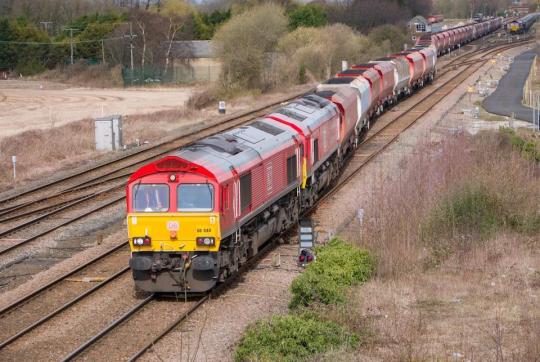
2012: Alternate Fuel Trials Begin:
As global warming became more prevalent, the NWR was criticised for its use of coal and diesel fuel. In response, the NWR began trials with several different alternatives, including E-Coal, torrefied rapeseed biofuel and 'electric steam'. Smaller engines like Neil were trialled with electric boilers to heat steam - and this led to the conversion of many smaller tank engines to the system, which was powered by electricity and thus extremely environmentally friendly (in theory). Other changes included solar panels installed on sheds and stations across the NWR and electric pre-heaters added to the steam engine boilers - something the NWR had been slowly working on since the mid-70s.
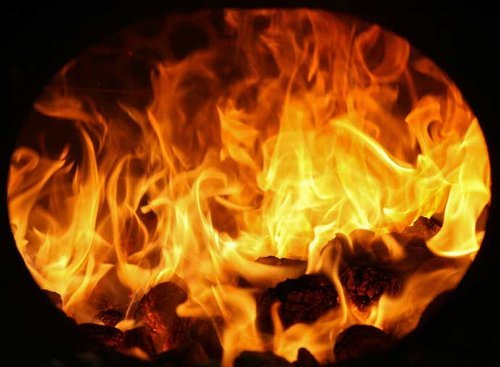
Torrefiers would be built by the NWR in 2014 to convert biomass into fuel for engines, and trials would be conducted with Murdoch - who had the largest firebox - throughout 2015. Torrefied rapeseed biofuel pellets would be used on some services from 2016 onwards, as Sodor led world research into the issue. However, its weakness to rain and its smell would keep it being used only on freight services, with a tarp pulled over the 'coal' pile to keep it dry.
2020: Global Pandemic and Coal Shortages:
In the modern era, the North Western Railway continues to be a profitable and successful company, providing services across the Island of Sodor and around the globe. The Covid Pandemic saw all but the most essential trains cancelled, including all of the extremely profitable tourist traffic Sodor relies on. For a few months, the railway was even divided into two, with Sodor services terminating at Vicarstown and Furness services terminating at Barrow. A number of engines were stored for the year, being reintroduced as Christmas approached and traffic began to pick up again into 2021.
Worse yet, coal shortages caused by the closure of most British coal mines and crises in Eastern Europe led the NWR to speed up its biofuel research, with most medium-sized engines (Edward, James, Emily, Arthur, Molly) being converted to burn biofuel by the end of 2022. Only the largest steam engines on the NWR and the diesels use fossil fuels as of the time of writing, due to the extremely successful implementation of biofuel, much of which is now grown on Sodor to provide for the NWR and other heritage railways, such as the Talyllyn in Wales.
Wow... that was a long post. As usual, no pictures belong to me, and I headcanoned basically all of this. I just love the idea of the NWR using everything at their disposal to work their way up from the grassroots railway we saw in the Three Railway Engines into a massive corporation that still has that grassroots feel to it... and a multinational holdings company reporting massive profits.
Thank you for reading this massive thing!
#railway series#thomas the tank engine#ao3 stuff#ttte au#railways#ao3 link#sodor#island of sodor#Sodor 1965-2020#biodiesel#electric steam#LZB#Linienzugbeeinflussung#deutsche bahn#nwr#ttte edward#ttte murdoch#ttte Class 40#ttte james#ttte analysis#analysis#british railways#british rail#sir topham hatt#Sir Stephen Hatt#Bridget Hatt#ao3 author#fanfiction writer#long reads#long post
86 notes
·
View notes
Text
Furness Passenger Engines 2/5: The 2-2-2 Well Tanks
The 5th and 6th engines that the Furness Railway acquired were two 2-2-2Ts from Sharp and Stewart in 1851. The network was expanding, and the well tanks were bought to handle passenger traffic so that the Bury 0-4-0s could concentrate on the mineral trains. ("5 class" or, in Rush notation, class B1)
There is very little info on these two engines, but they must have been generally satisfactory, as in 1857 the F.R. purchased another pair, of slightly larger dimensions, to become Nos. 11 and 12 (the F.R. considered these to also be members of the "5 class," but Rush designates them B2).
Yet another, larger pair was ordered seven years later, becoming Nos. 21 and 22. The F.R. was then absorbing other lines, notably the Whitehaven, Cleator, and Egremont Railway, and so another four engines of this class (Nos. 34, 35, 36, and 37) were acquired a couple years later. They were all honestly closer in build to the B2s than the B2s were to the B1s—but the F.R. considered these six their own class. Perhaps their larger size alone was enough. Certainly they were the most indispensable of the lot, serving as the railway's premiere passenger engines for the next six to seven years. This being the F.R. in the 1800s, mind you, this is an amazingly not-big deal. However, all the photos I can find of the passenger well tanks are of this class. ("21 class," or B3)
Personally, I think they look funky af, and on aesthetics I think I actually prefer them to the 2-2-2s with tenders. This might be a minority opinion though:
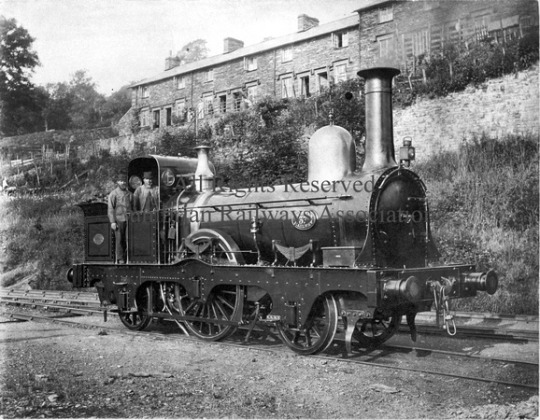
There is not a ton of information on the workings of these 10 engines while they were still in F.R. service—just on how they ended. By 1870, they were struggling with their trains and timetables, and so the F.R. began purchasing members of a new class of 2-4-0 tender engines.
The B1s, Nos. 5 and 6, were withdrawn in 1873 and presumably scrapped. The B2s must have had manifestly more working life left in them, for in this same year No. 11 was sold back to Sharp's in partial payment for one of the new 2-4-0s, and No. 12 was put on the duplicates list. No. 12A, along with its larger siblings in the B3 series, all put in another 25 years or so, mostly working the railway's new, and quite hilly, branch lines (a.k.a. the Furness bought out a lot of small railways in this era!)
The reckoning for the surviving 2-2-2Ts did not come till the arrival of the new "21 class"—the Larger Seagulls. At this point, the B3s were all put on the duplicates list. Most were scrapped two years later. Nos. 36A and 37A, however, were put to work as stationary engines, No. 22A was sold to a colliery, and then there was the matter of 12A (the last of the older and smaller 2-2-2Ts) and 35A... the latter of which, incidentally, was featured below on this postcard during Aslett's advertising campaign, billed as (wait for it)... "F.R. Old Tank Engine" (thaaaaanks, guysss!):

Okay, but seriously, doesn't that^ look kinda cool? Tell me I'm wrong. I dare you.
12A and 35A were sold in 1898 to the Weston, Clevedon & Portishead Railway. This was a 14-mile light railway connecting three coastal towns in Somerset, and it was in need of some new motive power that wasn't *mock shudder* tram engines. 12A was renamed Clevedon and ran until 1904-ish, and 35A was renamed Weston and ran until 1906.
For TTTE fans, I think this little line, acquiring engines of 30 and 40+ years as starter engines and hoping they lasted long enough for them to afford slightly better replacements, is an interesting study as one imagines how the N.W.R.'s constituent railways were getting along in the early 1900s. Maybe the early N.W.R. itself, for that matter...
Here, have Weston (former F.R. 35A):

I can't resist covering the other 2-2-2 well tanks, even though it's a bit of a stretch to put them in a series covering the Furness's passenger motive power. They were all obscure secondhand engines that the F.R. inherited while it was busy buying up those other little lines—where they had done well enough, but when the F.R. tried to move them to their rather hillier branch lines, most of them struggled.
However, they have really cool names: Queen Mab, Oberon, and Titania.
(They were way too cool for the soddin F.R., which promptly renamed them Nos. 46-48. What a lack of imagination!)
Queen Mab (class B4, according to Rush) was a Hawthorne engine, pretty similar to the oldest Sharp 2-2-2Ts in dimensions but very distinctive in appearance. She was eventually moved from Whitehaven to Barrow, and then to the Lakeside and Coniston branches. In 1875 she was sold to the Isle of Wight Central Railway, apparently more because of her non-standard maintenance requirements than due to a lack of usefulness, for the I.o.W.C.R. ran the veteran engine for fifteen more years under the name Newport.
Oberon and Titania (Rush: class B5) were sold in 1870, and in their case it really was that the F.R. could find no use for them. Unlike the Sharp 2-2-2WTs, they could not cope with gradients. They pottered along doing odd jobs, and poor Oberon couldn't keep himself out of trouble doing even that much:
Exhibit 1: This happened in the late 1850s, shortly after No. 12's arrival on the F.R.:
No. 12 was pulling a passenger train to Coniston while also pushing a box van, and her fireman was riding the front bufferbeam in order to detach the van at Broughton—
YEAH DON'T ASK ME I DON'T KNOW. BUT APPARENTLY THIS WAS ALL CONSIDERED NORMAL?!?!
AT LEAST, IT WAS UNTIL THIS FATEFUL DAY.
As any fool could have predicted would happen sooner or later, Oberon, running light engine, wound up heading straight towards her, but No. 12's crew could not see its approach until It Was Too Late. Oberon smashed the box van to smithereens, and the fireman was killed.
In an incongruously comical epilogue to this grim event, Oberon somehow pulled a "Percy Runs Away" after its crew jumped. It reversed out of the wreck. It hadn't been running in reverse to begin with, yet somehow its collision with the box van (or the crew doing something clumsy?) sent it back the way it had come. A porter at Broughton station saved that situation by simply opening the level crossing gates ahead of Oberon's approach; Oberon ran backwards up the steep incline beyond but, per its usual performance, stalled out on the hill.
me: *side-eyes the F.R.* Cavendo tutus, eh? What's that about your much-vaunted safety record?
the F.R. it was the 1850s! ! !
me: hmm
Exhibit 2: In 1866 a mineral train passed through the tunnel near Bransty, on the Whitehaven line. It pulled a "Cows," not realizing that it had lost the tail of its train in the tunnel. The morning passenger train came at the usual time, the fireman as per the custom in the first era riding the front bufferbeam through the tunnel to sand the slick rails. The driver was scalded and permanently disabled, and the fireman...
me: *side-eyes the F.R. again*
the F.R.: no passengers were hurt!
It's unclear to me whether Oberon was pulling the passenger train or was there as the "pilot engine" that was supposed to be used in order to safely (!) convey engines through the tunnel (?), but, either way, yeah.
After being involved in two accidents involving the deaths of two firemen, Oberon for the rest of its limited days on the F.R. bore a macabre reputation.
#real true railway stuff#the furness series#cw death#cw injury#apparently the furness never had 'two engines in collision with each other'#on the extremely technical grounds that oberon only ever collided with *vans*#kinda splittin' hairs here guys#(in fairness with that first incident oberon *may* not have yet been a f.r. engine)#(but yeah)#(still)
22 notes
·
View notes
